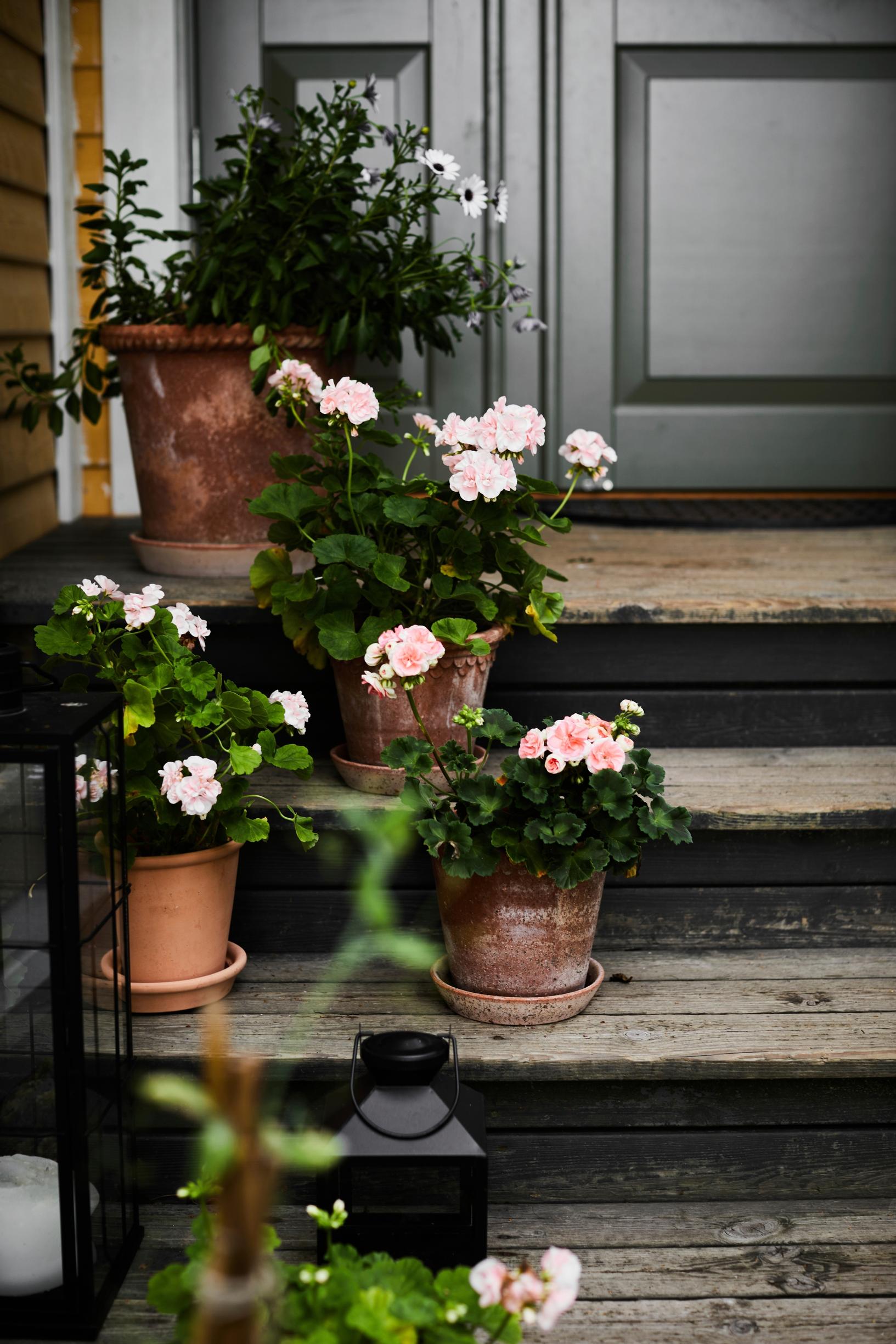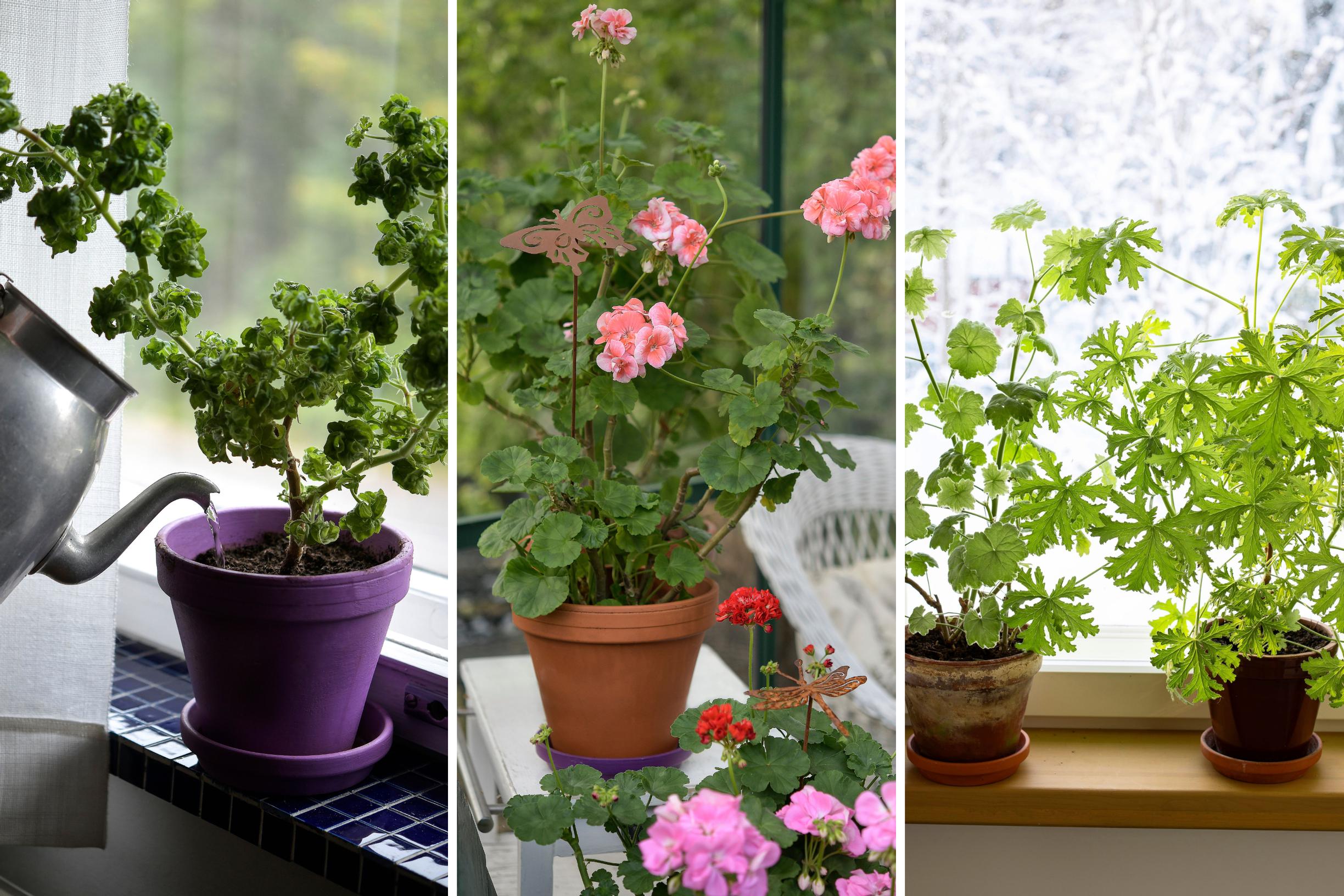
No cool storage? Overwinter your pelargoniums at room temperature—and watch them bloom all winter
Bring your pelargoniums indoors in the fall so you can enjoy their blooms again next summer. Even without a perfect winter storage area, overwintering a pelargonium can work. We asked gardener and pelargonium expert Auli Ketola for expert winter care tips. She also explains which varieties are the easiest and which are the trickiest to overwinter.
1. If a pelargonium could choose, how would it spend the winter?
Most pelargoniums come from the warm, sunny regions of South Africa and generally don’t need a true dormant period. However, there are also wild species that require a cool, dry rest.
Pelargoniums get through Finland’s dark winter best in a cool, bright spot with minimal watering. Under ideal overwintering conditions, the temperature is around 5–12 degrees Celsius (41–54°F), with good air circulation and about 40 percent relative humidity.
Provide artificial light for 8–12 hours a day. The warmer the room, the more light is needed. Regular lamps may help your plants through winter, but a grow light can keep them blooming.
2. What if you don’t have an ideal storage space for pelargonium overwintering?
If you don’t have a cool, bright place for overwintering, you can still keep a pelargonium going at room temperature with a grow light. Even without special lighting, many scented pelargoniums can be overwintered successfully.
The toughest pelargoniums can even overwinter in complete darkness in a cool storage room. However, an earth cellar is often too damp, exposing the plants to gray mold and other fungal diseases.
In darkness, stems may easily dry up, but new growth can emerge from buds near the base. If your only other option is to compost the plant, try overwintering it in any space that stays above freezing.
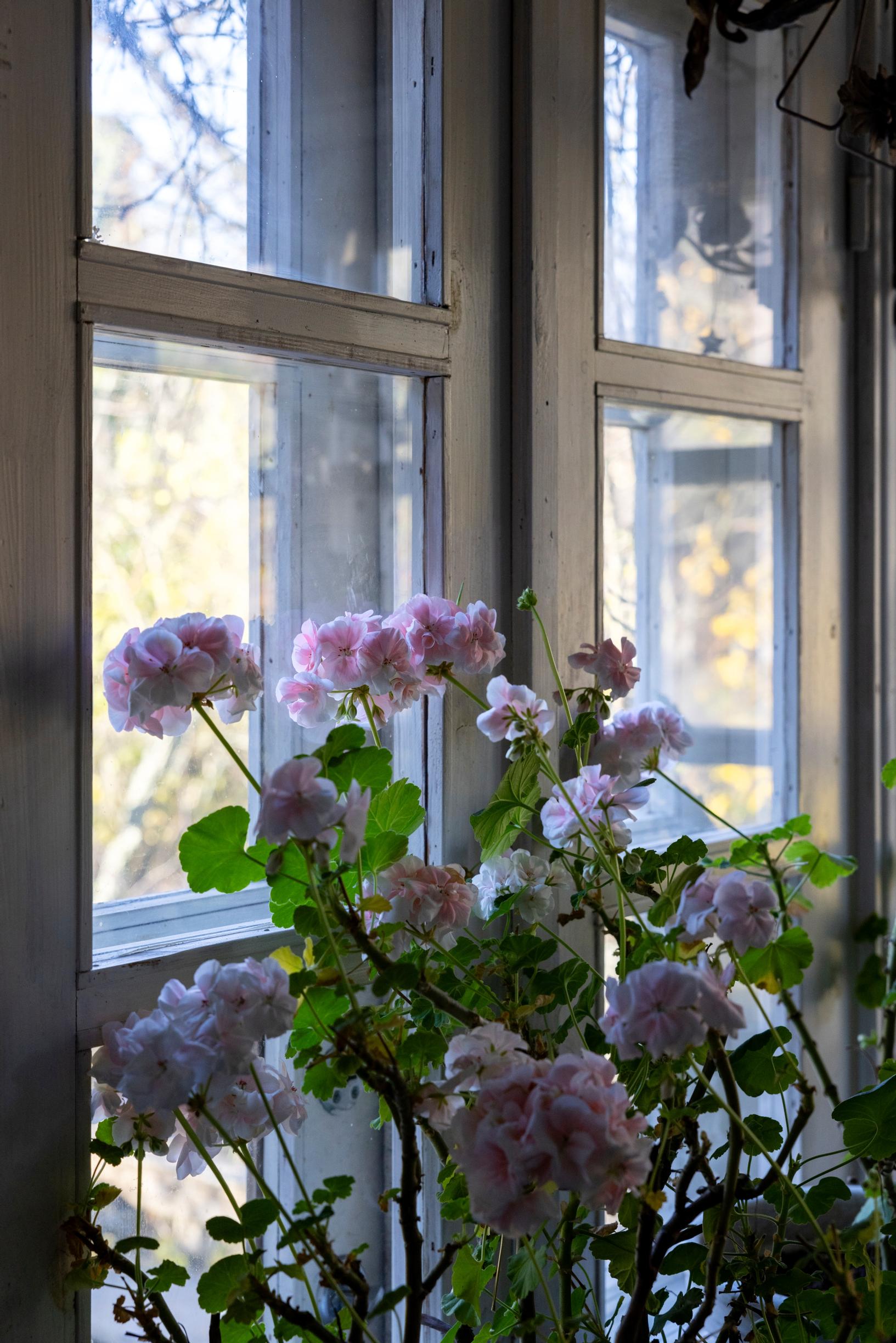
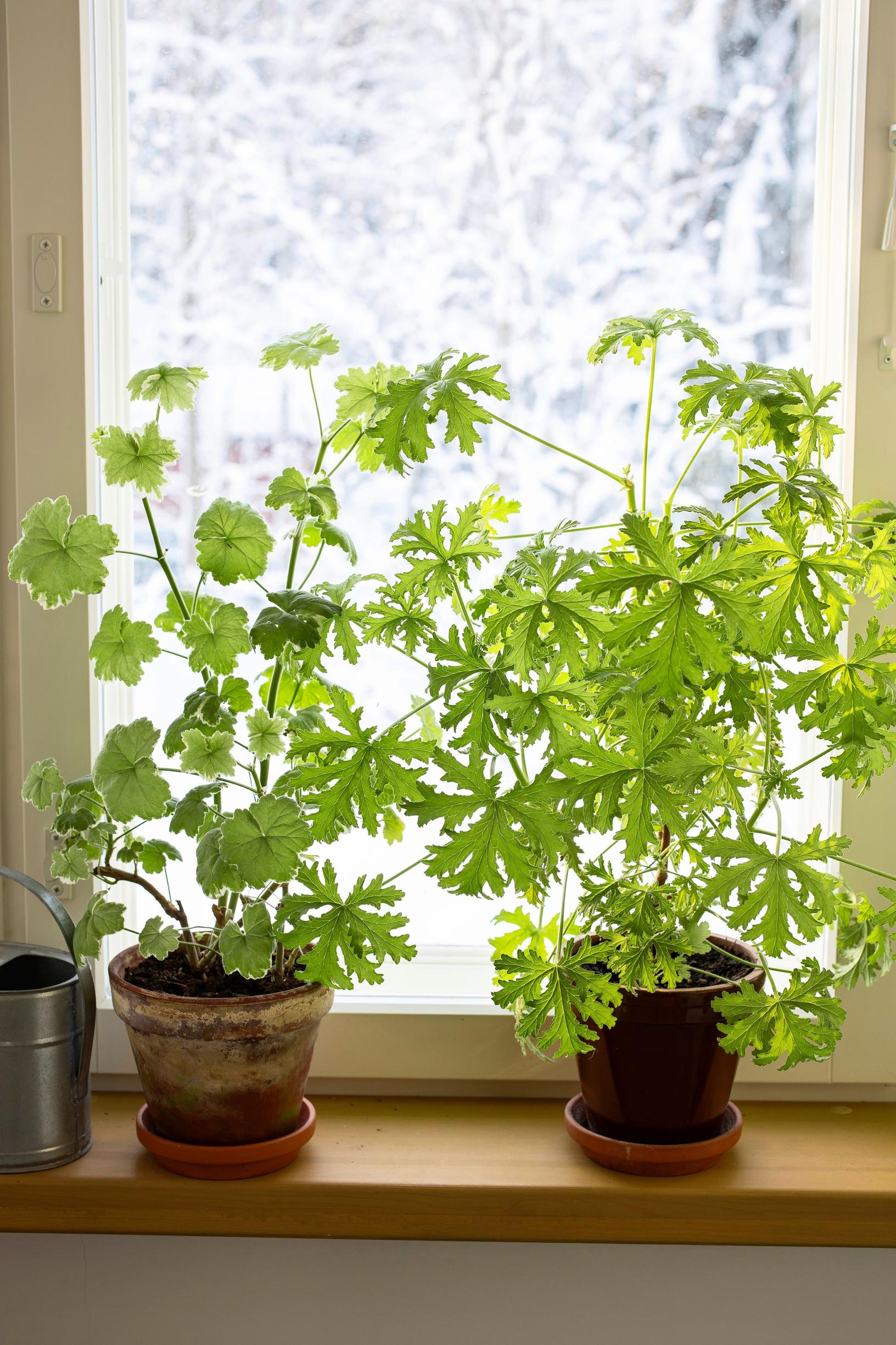
3. How do the plant’s age and size affect overwintering?
Vigorous plants with healthy roots have the best odds of survival. Since overwintering can be uncertain, consider rooting cuttings from your favorite plants in late summer or fall. Cuttings generally do well through winter—either in water or directly in soil.
4. Which pelargoniums are most likely to overwinter successfully?
Here, old garden geranium varieties and traditional Finnish pelargoniums are the easiest to keep over winter. Many wild species and scented pelargoniums also do well. The same is true of regal pelargoniums, although they’re frequently bothered by pests.
Succulent-like species, such as hollyhock-leaved geranium (pelargonium cotyledoni) and pelargonium carnosum, can thrive on a windowsill like regular houseplants, as long as you water sparingly.
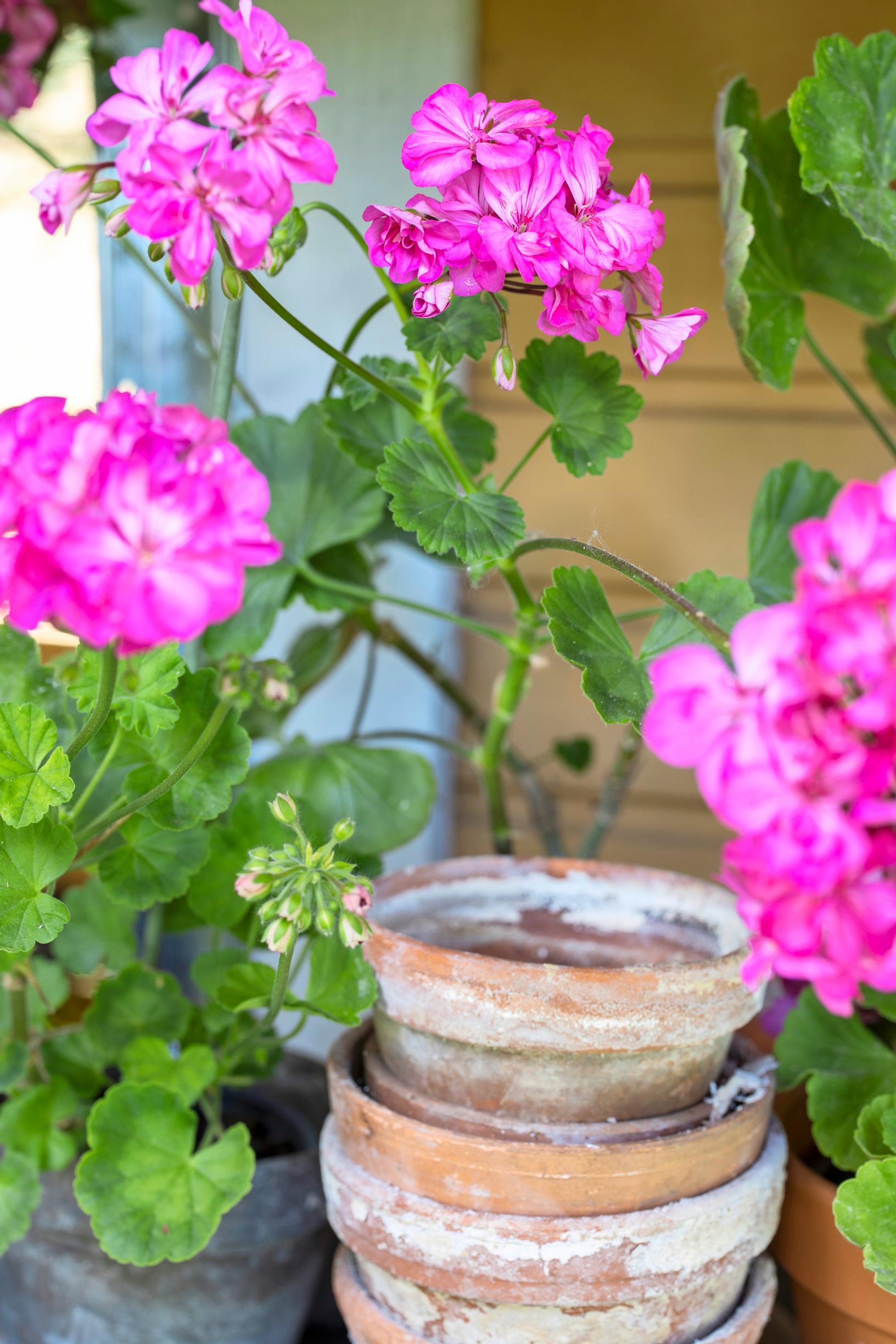
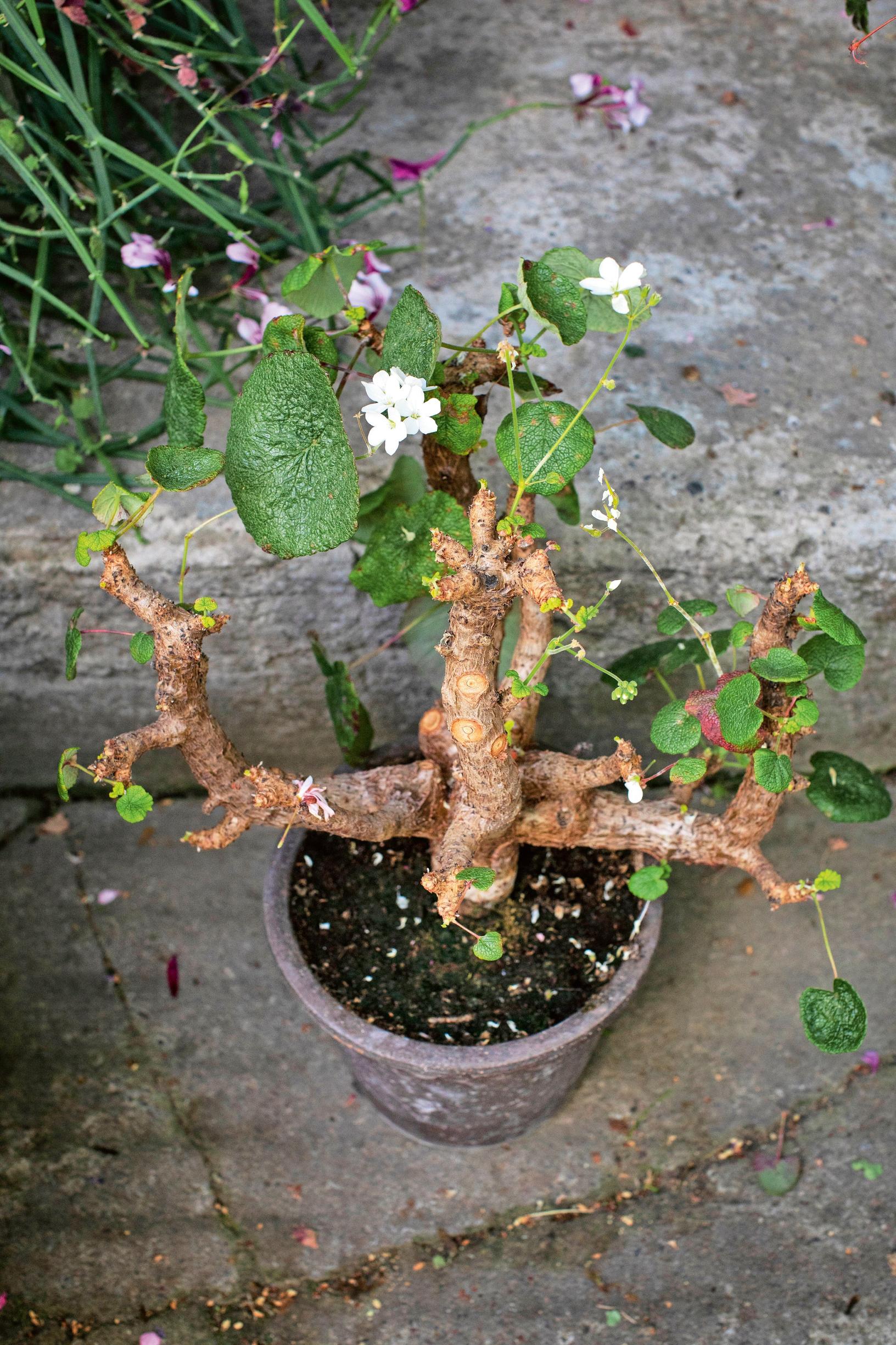
5. Which pelargoniums are particularly tricky?
Among common and scented pelargoniums, variegated-leaf types are the most demanding, because their reduced chlorophyll makes photosynthesis less efficient. They need more light and space than green-leaf varieties.
Those sold as annual summer flowers can be hard to overwinter, since growth regulators are used to keep them short and profusely flowering. English pelargoniums are also best treated as annuals, requiring a cool rest, lots of light, and consistently moist soil.
Some wild species, for instance pelargonium echinatum and pelargonium triste, pose a challenge because they need a bright, cool, and dry dormancy.
7. Should you prune pelargoniums in fall or wait until spring?
August–September is preferable to spring for cutting pelargoniums back to a tidy size. A plant pruned in fall needs less storage space and will bloom earlier in spring. Early pruning allows the plant to recover before storage, so the best time is early August, when it’s actively growing and in full bloom. Then cuts heal quickly, and the plant can produce new growth before going into storage. Slightly dry soil also helps the wounds heal.
Young pelargoniums usually handle heavy pruning well. For older plants, prune more conservatively and focus on trimming new growth.
If your pelargonium is naturally compact, or if you want to let it grow larger, simply remove poor leaves, dry stems, and any flowers or buds. This improves airflow, prevents fungal problems, and cuts down on leaves and petals dropping in storage.

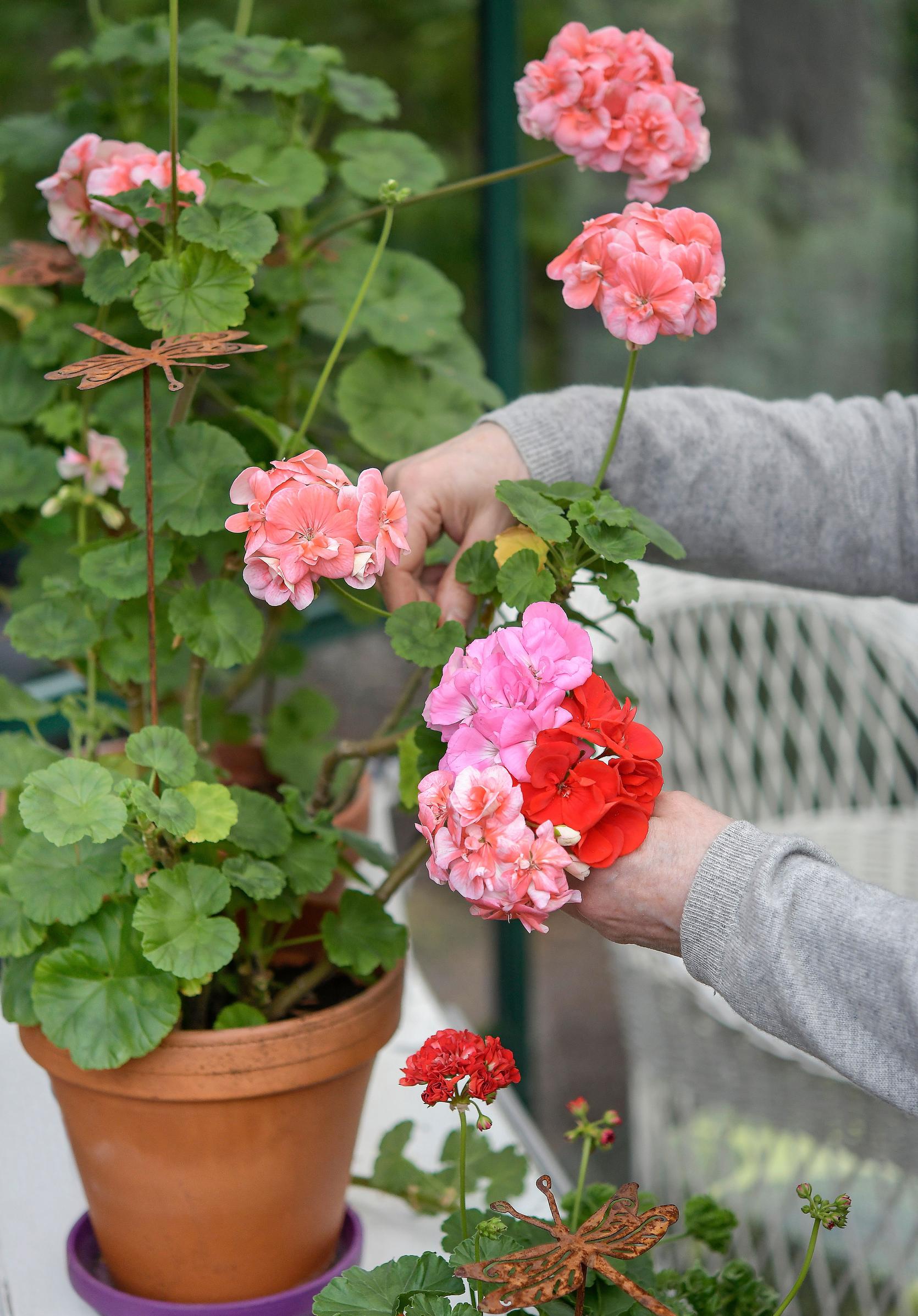
8. Do pelargoniums need special prep for winter rest? When should you bring them indoors?
Stop fertilizing in mid-August. Check plants for pests before storage, especially aphids and whiteflies, which often target wild species and regal pelargoniums.
Move the plant to its winter quarters as soon as possible, before the foliage and roots suffer in cooler autumn weather. This helps the pelargonium avoid dramatic, stressful shifts. Several small changes are gentler on the plant than a single abrupt one.
9. How often do pelargoniums need watering in winter, and what else do they need?
Be patient with watering over winter. If the pot feels light, offer just a splash of water. In cooler conditions, it’s crucial to avoid overwatering. Excess moisture is a greater hazard than dryness. A large pot—compared to the plant size—further increases root-rot risks.
A grow light does raise evaporation and watering needs. If a pelargonium under a grow light is sprouting new growth, it may respond well to a mild fertilizer.
When removing dead leaves in winter, be careful not to damage healthy growth, since open wounds increase the risk of disease in humid conditions.
Keep an eye out for aphids, whiteflies, and other pests. If pests take over, you can remove the plant altogether or spray it with a houseplant-safe product. You can also squash aphids by hand or rinse them off with water.

10. When should you remove the pot from storage, and how do you care for the plant in spring?
Bring the pelargonium out of its winter home to a windowsill around late February or March. Start with mild watering, since a plant moving from cool conditions won’t use much water at first. Gradually increase the watering and add a diluted fertilizer.
Give the pelargonium fresh, airy soil each year if possible. Let older plants recover for a couple of weeks after repotting before pruning any weak, long stems.
If you want very early blooms, provide extra light in spring. Natural light is irreplaceable once buds begin to develop, so move the plant outdoors as soon as the weather allows. Ease it into outdoor life gradually.
